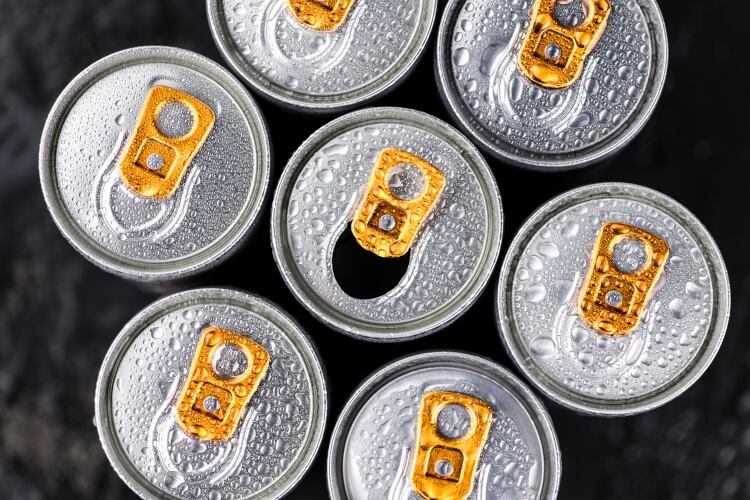“Our ambition is a bold but simple one. We will halve childhood obesity and significantly reduce the gap in obesity between children from the most and least deprived areas by 2030,” concludes the Department of Health and Social Care in Childhood obesity: a plan for action, chapter 2, the Government’s latest update to its childhood obesity plan, published originally in 2016.
It really is a bold ambition. But, by 2030, the present Government won’t be around to be accountable if it isn’t met. Nevertheless, it has to be hoped that the varied new measures proposed in this plan, together with an updated Nutrient Profiling Model, used to control the promotion and advertising of food and drink to children, can help reduce the UK’s obesity levels.
Much of the success in achieving this goal rests on industry coming up with ways to reduce the high fat, sugar and salt (HFSS) content of foods. In many cases, however, taking these ingredients out of products is only half the battle – the key to successful reformulation is finding suitable replacements, and that’s where fibre comes in.
It has long been recognised that different forms of dietary fibre are important in satiety and weight control. In contrast, using fibre to supplement less nutritional ingredients remains relatively novel – but it offers huge potential.
According to the latest data from Public Health England (PHE), severe obesity levels in children aged 10 to 11 years are at their greatest since records began. “The rise in severe obesity and widening health inequalities highlight why bold measures are needed to tackle this threat to our children’s health,” says PHE chief nutritionist Dr Alison Tedstone.
However, legislators, the health sector and the food industry cannot agree on the best solution to the problem.
Health lobby groups want more legislative stick wielded over the industry, while the industry calls for more carrot, arguing that better progress has been achieved through voluntary action, in areas such as reformulation of products to reduce HFSS content.
Multi-dimensional approach
The problem is complex and a multi-dimensional approach is required to solve it. While recent activity has focused on sugar reduction – witnessed this year by the introduction of the Soft Drinks Industry Levy – nutritionists argue that a more holistic approach to calorie reduction is required.
Ultimately, overweight and obese adults and children must be helped to lose weight and keep it off, while better education is necessary to stop kids getting fat in the first place. Dietary advice and controls will inevitably play a central role.
If obesity levels fail to improve, tougher legislation can be expected – ranging from taxes on more HFSS food and drink to stiffer restrictions on the advertising of such foodstuffs (see box).
At first glance, the omens don’t look good. Industry has already failed to meet the first-year challenge of removing 5% of the sugar contained in food most commonly eaten by children, as part of the Government’s challenge to industry to achieve a 20% reduction by 2020.
However, some progress is being made. Over the past five years, FDF members have voluntarily reduced the calorie content in the average basket by 5.5% and sugar content by 12.1%, while in soft drinks specifically, sugar content has been reduced by 19% since 2013.
Kellogg UK, meanwhile, has cut between 20% and 40% of sugar from its cereals most popular with children, Yoplait has reduced the amount of sugar by 13.2%, and Waitrose has taken 5.5% of sugar out of its confectionery.
Most recently, Mondelēz launched a variant of its Cadbury Dairy Milk bar with 30% less sugar by increasing its fibre content, as part of a wider sugar reduction drive.
Essential proteins, minerals and vitamins
When considering weight control among children, though, care must be exercised that efforts don’t simultaneously reduce their intake of essential proteins, minerals and vitamins, which are crucial to their healthy development, warns Professor Judy Buttriss, director general of the British Nutrition Foundation.
Then, there is the obstacle of widespread misconception among the population that low- and no-calorie (noncaloric) sweeteners pose a health risk. The message needs to be conveyed to consumers that noncaloric sweeteners have an important part to play in weight management, argues Buttriss.
In contrast, dietary fibre’s role in satiety and weight control is poorly understood by consumers, she adds. This is reflected in the fact that, on average, adults in the UK consume about 18g of fibre a day, much less than the recommended 30g.
To be most effective, increasing fibre in the diet – a carbohydrate, like sugar but with less than half the calories of other carbohydrates – will need to be combined with the use of noncaloric sweeteners, Buttriss suggests. “Noncaloric sweeteners are one of the main tools in the toolbox of those companies trying to reduce the calorie content of products.”
What’s more, consumption patterns are changing. Traditional breakfast cereals face increased competition from other formats, for example. This matters, because cereals are a good source of fibre, as well being fortified with a raft of other minerals and vitamins in which the population is deficient, according to the National Diet and Nutrition Survey.
On average, 40% of the fibre we consume comes from cereals and cereal-based foods, says Buttriss.
According the PHE’s Eatwell Guide, carbohydrate-based foods are supposed to provide about half of our calories. Yet, many fad diets encourage people to ditch carbs. “So, for people cutting out carbs – bread, pasta and rice, their chances of getting sufficient levels of fibre are going to be seriously hampered,” warns Buttriss.
Reformulation
Meanwhile, Tate & Lyle’s global director of nutrition Dr Kavita Karnik advises manufacturers thinking of reformulating products to increase their fibre content, but notes that not all fibres are the same.
Until recently, Karnik was the chair of the International Life Sciences Institute’s eating behaviours and energy balance task force. The group has been working on measuring and defining satiation (feeling full when eating) and satiety (feeling full for longer), which should help manufacturers select the correct ingredients for their products.
Tate & Lyle’s ingredients line includes its PromOat beta glucan, a soluble oat bran fibre, extracted from wholegrain oats, which helps to maintain healthy blood cholesterol levels and can also affect satiety.
It also offers a corn-based soluble fibre called Promitor, designed to help with weight management. This is added to food and drink to boost fibre content without affecting taste, texture or appearance.
“Choosing the right fibre in the food matrix they are using is so critical for manufacturers,” says Karnik. “Fibres can affect satiety and, eventually, weight management in a different way depending on the type of fibre. So, whether it’s a snacking ingredient or a meal ingredient, you may want to achieve different things.”
Fibre also helps reduce coronary vascular disease and certain colon cancers, says Buttriss. “Fibre is a nutrient where not enough attention has been paid,” she explains. “For all sorts of reasons, it doesn’t get as much air time as it deserves.”
Given the urgency of the nation’s obesity problem, it could be that fibre’s time in the limelight has arrived.
‘Disquiet’ over ad restrictions
In the second ‘chapter’ of its childhood obesity plan, published in June, the Government called on industry to recognise the harm that adverts for foods high in fat, sugar and salt can cause. It plans to consult on introducing new TV and online advertising restrictions to prevent children from being targeted by such foods.
This could include limiting adverts shown during children’s programmes up to 9pm.
The new plans have generated “deep disquiet” in the industry, according to the Food and Drink Federation. “If our ability to advertise and promote new healthier options to shoppers is restricted, it could risk the success of the reformulation programme,” says a spokesperson.
“Any further restrictions will have to pass stern tests around targeting and effectiveness.”



